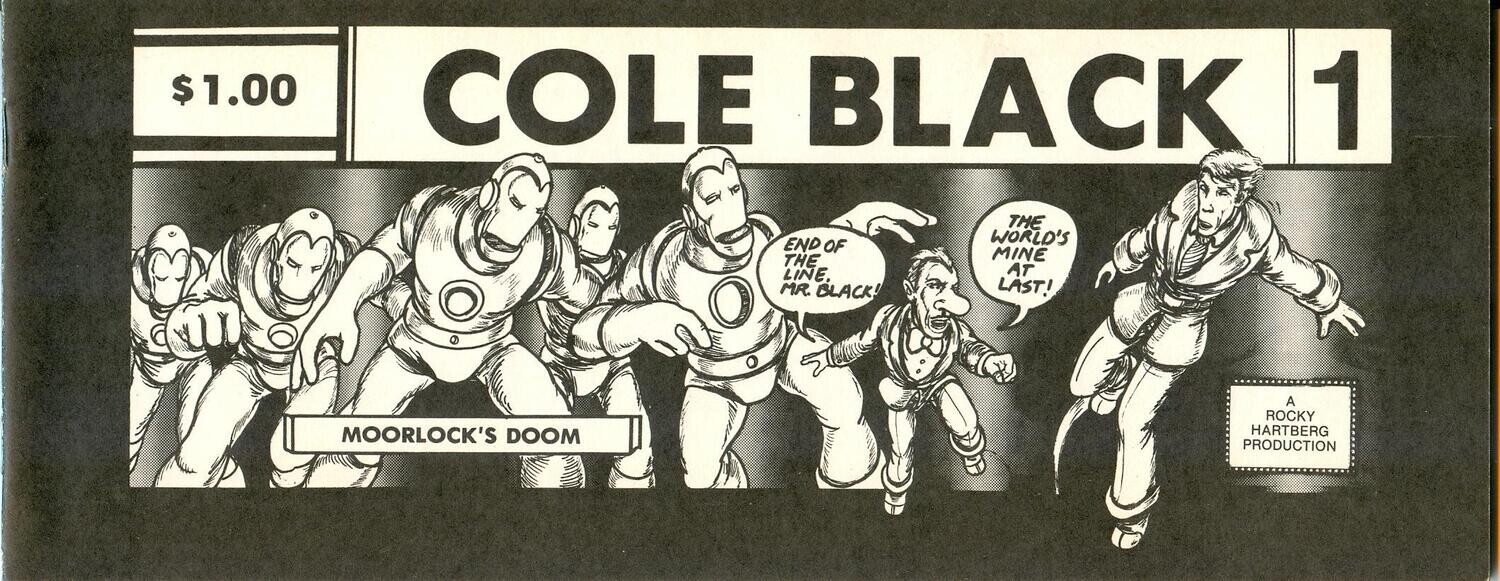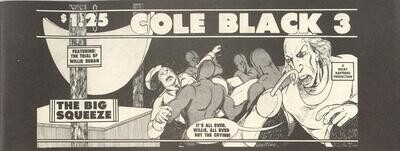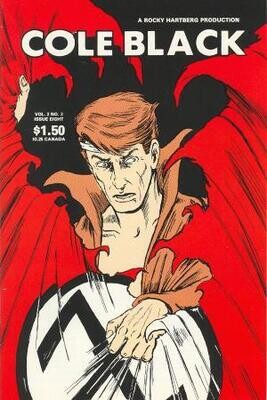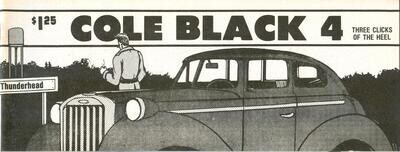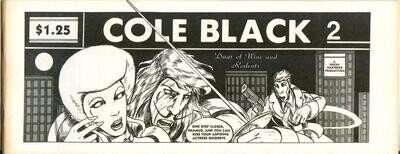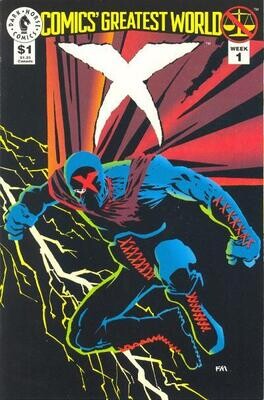
Cole Black Comics Vol. 1, #1, the 1st issue from 1980 - Rocky Hartberg $1.00
Cole Black Comics - Volume 1, Number 1 ~ Signed and dated by Rocky Hartberg on the title page. This was the first issue of Cole Black Comics published in 1980. The print-run was about 1,000 copies. Bud Plant ordered most of the remaining unsold copies several years later. The size is unique in comix publishing, roughly 4"x10½" This is a difficult underground to find and my only copy of this issue. This copy is about Very Fine, slightly yellowed around the edges.
The story in this issue is Moorlock's Doom in which Cole Black encounters Mickey Moorlock and a robot that looks a whole lot like Iron Man.
Remember the black and white explosion of the 1980s? Well, Cole Black was a hard-boiled detective comic series during that time. Cole was originally intended for publication in Marvel's Epic magazine back in the early-1980s but a change in editorial direction scrapped the project. Determined to see his creation in print, writer/artist Rocky Hartberg proceed to self-publish Cole Black. The first five issues were unique in that they were presented in newspaper strip format. Then Rocky shifted directions, formats, and storylines. Issue volume 2, number 1, was a "normal" format comic that took the detective, eventually, into World War II.
Some fans noticed that something seemed to be missing between vol. 1, #5, and vol. 2, #1. They were right. An entire finished issue of Cole Black had been skipped. Like the issues in volume 2, this missing issue was in standard comic book format. It was intended to have a color cover and 24 page black and white interior. But, more importantly, it wrapped up the story line from #5. Boardman Books has produced an extremely limited edition of Cole Black #6, the missing issue, reproduced from the original art.
From the 1970s through the early-1990s Rocky Hartberg's comic art could be found in a variety of fanzines and comic books. Hartberg, a commercial artist, began collecting comics in the 1960s. He has a particular interest in the golden age especially the comics work of Will Eisner, Reed Crandall, and others. In the 1970s, while studying art, Hartberg turned his own skills to the comics medium. His work was published in a variety of fanzines which eventually led to the publication of White Knight Comics in 1978 and the acceptance of Hartberg's golden age comic strip style hard-boiled detective, Cole Black, for inclusion in Marvel's Epic Magazine in 1980.
Cole Black was deliberately created in comic strip format and in a style reminiscent of goldenage but when editors changed at Epic, Hartberg found his project out of style with the magazine. It was eventually canceled. Determined to press on with the Cole Black character, Hartberg self-published Cole Black in an eight issue run that was moderately successful for the first five issues, massively successful with issue six (volume 2, #1), and that then crashed and burned for two issues as the independent black and white market collapsed in the late-1980s. The last issue of Cole Black was number eight (volume 2, #3). Three additional issues of Cole Black were in various stages of completion including the missing volume one, number six.
Beginning in the early-1990s, Hartberg turned his attention to other avenues of art. Over the last few years he has been producing paintings based on classics of children's and other fantasy literature. He has had several major shows of his works
